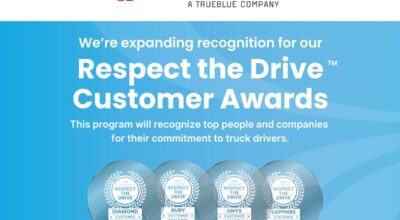
In a perfect world, a driver would be hired, stay with the same company the entire length of their career, then retire happily to enjoy the fruits of their labor. But this isn’t reality.
Drivers leave their positions all the time. Sometimes it is because they’ve put in years of service and are ready to retire. Other times, they’ve secured a driving job someplace else or, in some cases, they’ve decided to leave the transportation industry completely and enter a new field. No matter what the reason, driver turnover comes at a cost.
Average cost of truck driver turnover
Every company has a different number for turnover costs, but one study conducted by the Upper Great Plains Transportation Institute estimates that the average cost to replace a driver is $8,234. Some companies paid less and others paid more, with a range of $2,243 to $20,729 per driver replacement.
What type of expenses contribute to driver turnover costs? Here are a few to consider.
Recruiting costs
Do you place ads when looking for a new driver? Or maybe you pay to post a listing on internet-based job search platforms. Certainly, there are no-cost ways to recruit new drivers—such as asking current employees for referrals or hanging a help wanted sign in the window—but these are limited in reach.
If you want to get the broadest pool of applicants possible, this often requires paying for increased exposure via an advertisement of some type. Advertise in multiple places and these costs go up.
Hiring costs
Hiring a new truck driver can be a lengthy process. The more comprehensive you are in researching potential applicants’ qualifications and interviewing the candidates you’d like to learn more about, the more time this process takes.
While it’s certainly beneficial to make sure you bring the right driver on board, you’re also paying current staff to sift through the applications, screen qualified candidates based on your criteria, and conduct the necessary interviews. If you have a high driver turnover rate, this payout can quickly add up.
When considering your hiring costs, think about how many hours it takes your staff to perform these tasks. Additionally, is the hiring process putting them behind with their other work, causing them to work overtime? If so, there may be even more costs associated with the time it takes to bring a new driver on board.
Testing and screening costs
Once you’ve selected the driver you want, you transition into testing and screening costs. This might include costs associated with pre-employment drug and alcohol testing, securing the desired candidate’s driving record, and conducting a criminal record search. Each of these screening measures costs money.
Although it may be money well spent, it still adds to your total driver turnover costs. So, these expenses must be considered when calculating how much you spend to fill an open driving position.
Training costs
Congratulations! The job candidate has passed the screening process. Now it’s time to train that employee which, again, comes at a cost.
New hires that have minimal driving experience will generally require more training time. If you decide to hire someone with no experience, the company may pay to send them to training. Truck driving school can cost thousands of dollars per attendee.
Even experienced drivers must be trained to a certain extent to teach them about the company’s processes and procedures when it comes to the transportation and delivery of goods. Every hour (or day) a current employee spends providing this training adds to driver turnover costs.
Sitting product costs
If one driver leaves, the company may be able to rearrange the other drivers’ schedules to help cover the transport and delivery of the open position’s goods. But if you lose several drivers at a time or are operating with minimal drivers to begin with, this can lead to sitting product costs.
Delayed delivery means delayed payment for the goods being delivered. If this becomes a regular occurrence, products not being delivered on time can result in losing customers. They might choose to do business elsewhere to ensure that they get their goods as promised.
So, not only can it cost a company to have goods with no movement, but the damage this can do to its reputation has a ripple effect that can negatively affect profits well into the future – sometimes having a permanent impact.
Concerned about your driver turnover cost?
If you’re concerned about your driver turnover costs, contact Centerline today. Our streamlined solutions are designed to fully handle the recruitment and management of your driving staff.
These solutions can also help reduce turnover as we have a 96% truck driver retention rate.
Curious what the cost of a sitting truck costs you? Download our free info sheet to see what not having a driver could cost your business.


